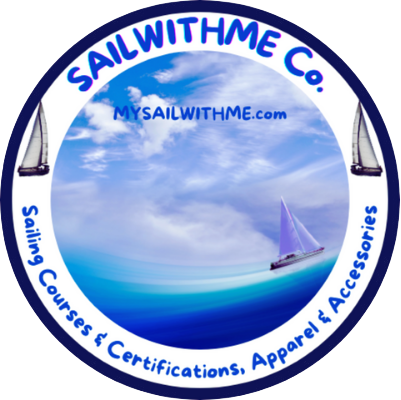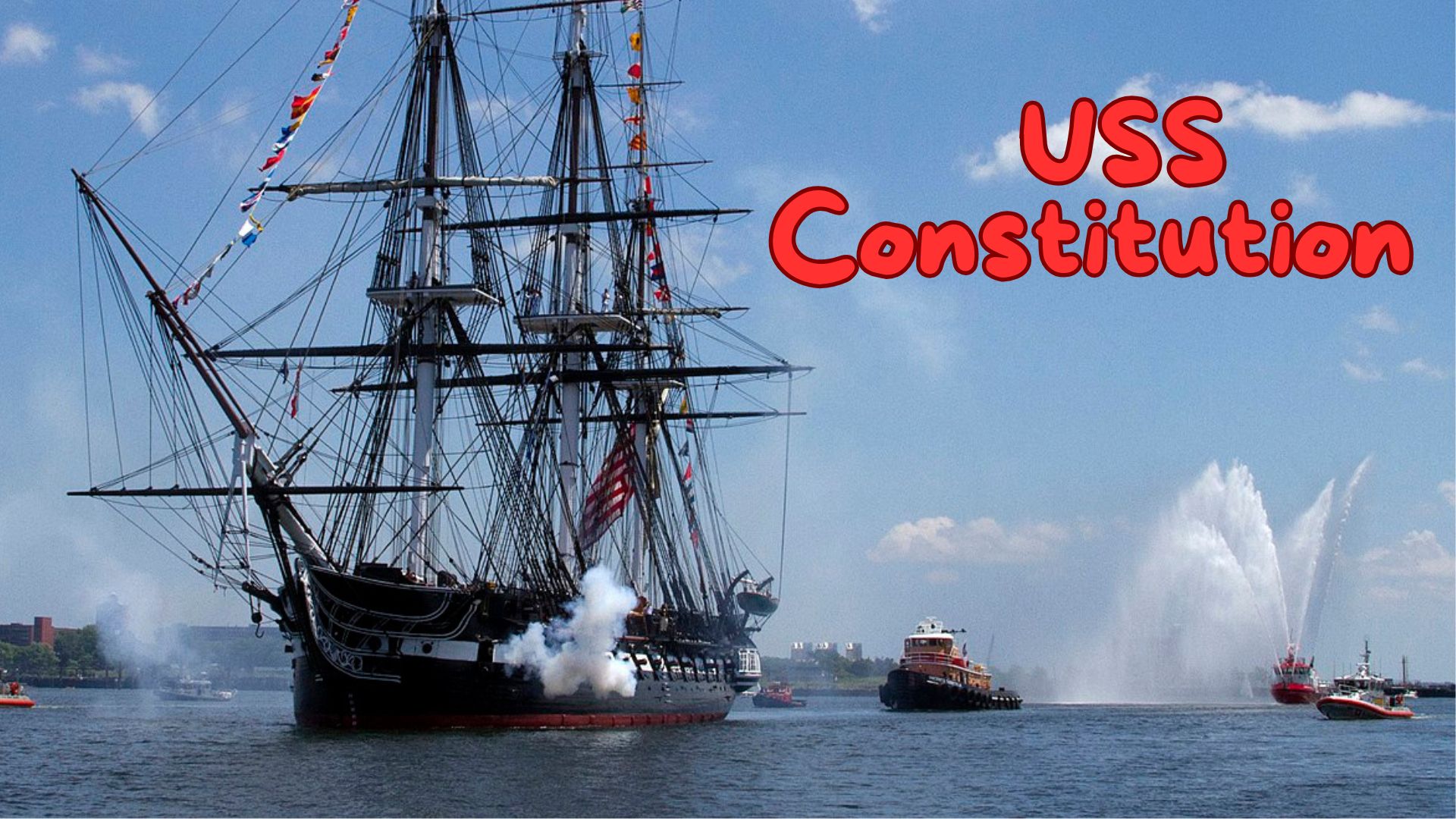Ships have long carried names rich in tradition, purpose, and identity. Among these, prefixes like SS, HMS, and USS are more than just letters—they signify a vessel’s function, ownership, propulsion, or allegiance. Far from random, these designations offer fascinating insights into maritime history, technology, and culture.
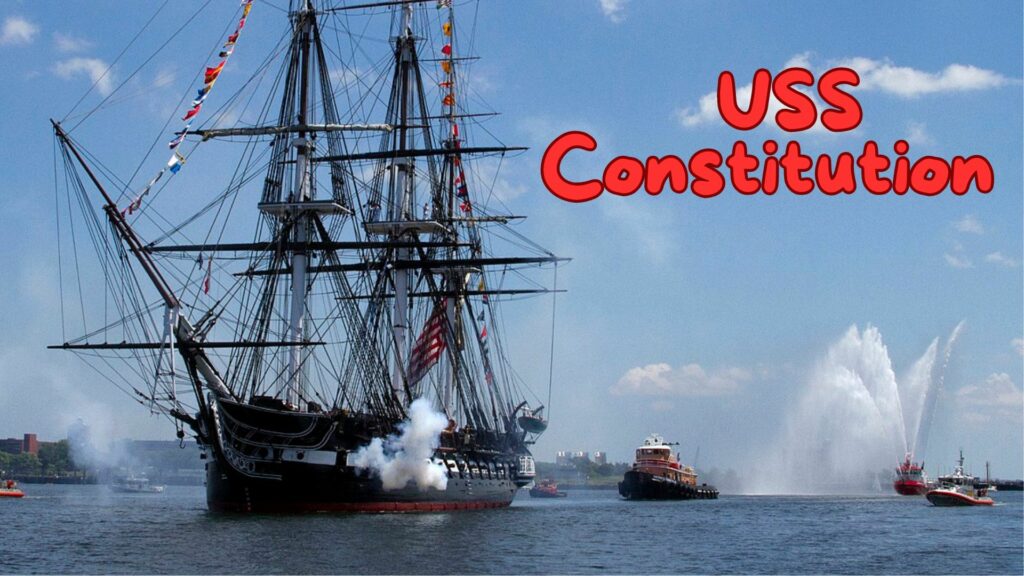
Click on each image to expand. All images in this article are licensed under Creative Commons licenses. They have been used with proper attribution in accordance with the following license terms: Attribution-Share Alike 2.0 Generic, Attribution-Share Alike 4.0 International, Attribution 3.0 Unported license, Attribution-Share Alike 3.0 Germany.
Knowing whether a vessel is a Motor Tanker (MT) or a Sailing Vessel (SV) can provide immediate insights into her capabilities and purpose. Similarly, prefixes like HMS (His/Her Majesty’s Ship) connect a vessel to her nation’s navy, offering a glimpse into her role in defense and exploration. Traditional prefixes like “SS” for Steam Ship continue to evoke nostalgia among maritime admirers.
Merchant Ship Prefixes: Identifying Commercial Vessels
Merchant ships, whether used for trade, cargo transport, or passenger services, often carry prefixes that indicate their propulsion or function. Here are some of the most commonly used ones.
SV (Sailing Vessel)
Before the steam era, sailing ships dominated the seas. While modern sailing vessels are primarily used for leisure and racing, the SV prefix still denotes ships powered by sails. While they were once the backbone of maritime trade, today they are mainly used for recreation, training, or as historical replicas. Sailing vessels captivate the imagination with their blend of tradition and adventure. These ships remind us of the romance of wind-powered travel across the seas.
SV Mayflower II is a faithful replica of the original Mayflower, the ship that carried the Pilgrims to America in 1620. Built in England in the 1950s, she was sailed across the Atlantic to Massachusetts as a symbol of the enduring historical ties between the U.S. and the U.K. Unlike modern vessels, the ship relies entirely on sails for propulsion, showcasing the challenges faced by 17th-century sailors. Today, she serves as a floating museum, offering visitors a glimpse into the conditions of early transatlantic voyages and the craftsmanship of traditional wooden shipbuilding.
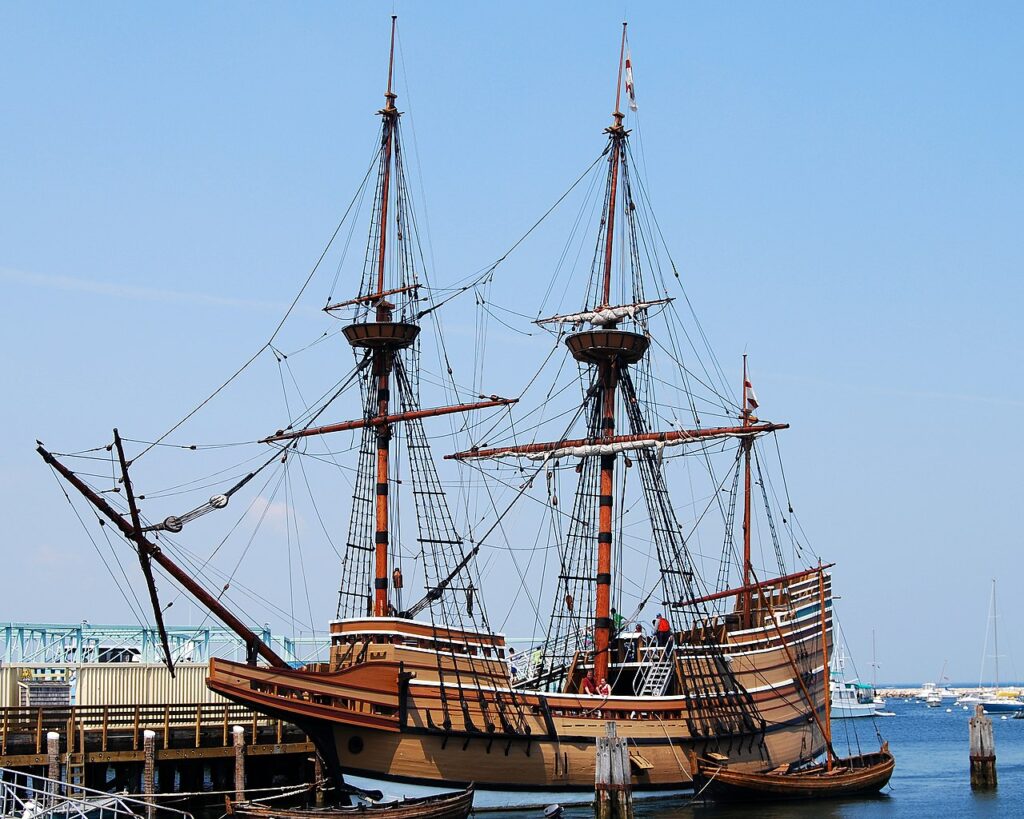
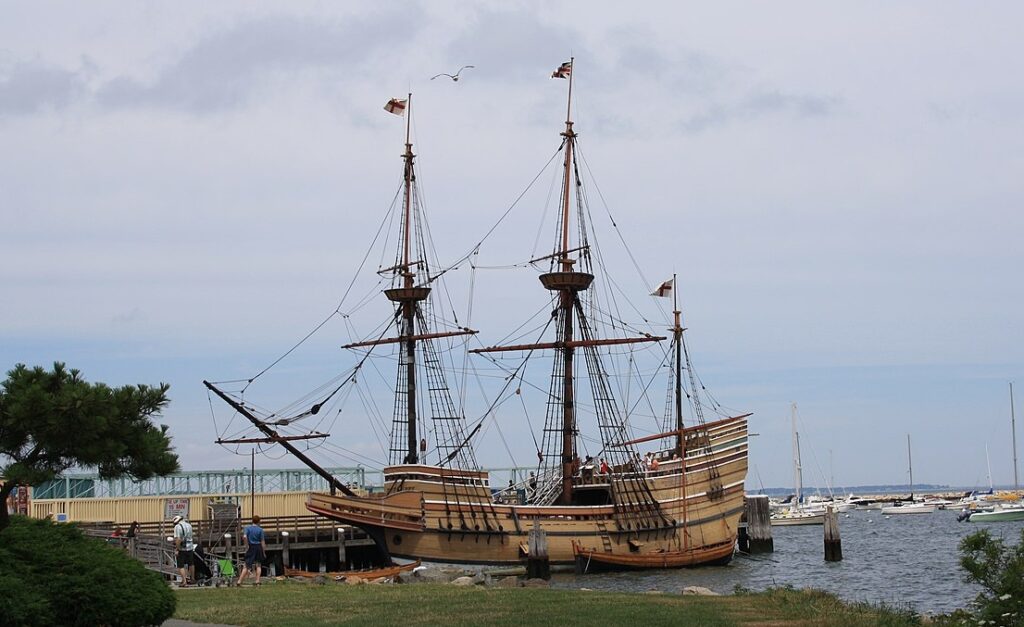
SV Concordia was a tall ship designed as a floating classroom, offering students the unique opportunity to learn while sailing around the world. Built in 1992, this barquentine-rigged vessel combined traditional sailing techniques with modern educational programs. She was equipped with multiple masts and a large sail area, requiring teamwork and skill to operate. In 2010, the Concordia tragically capsized off the coast of Italy near the island of Giglio. Fortunately, all 64 people on board survived, thanks to rigorous safety protocols and well-executed emergency procedures!
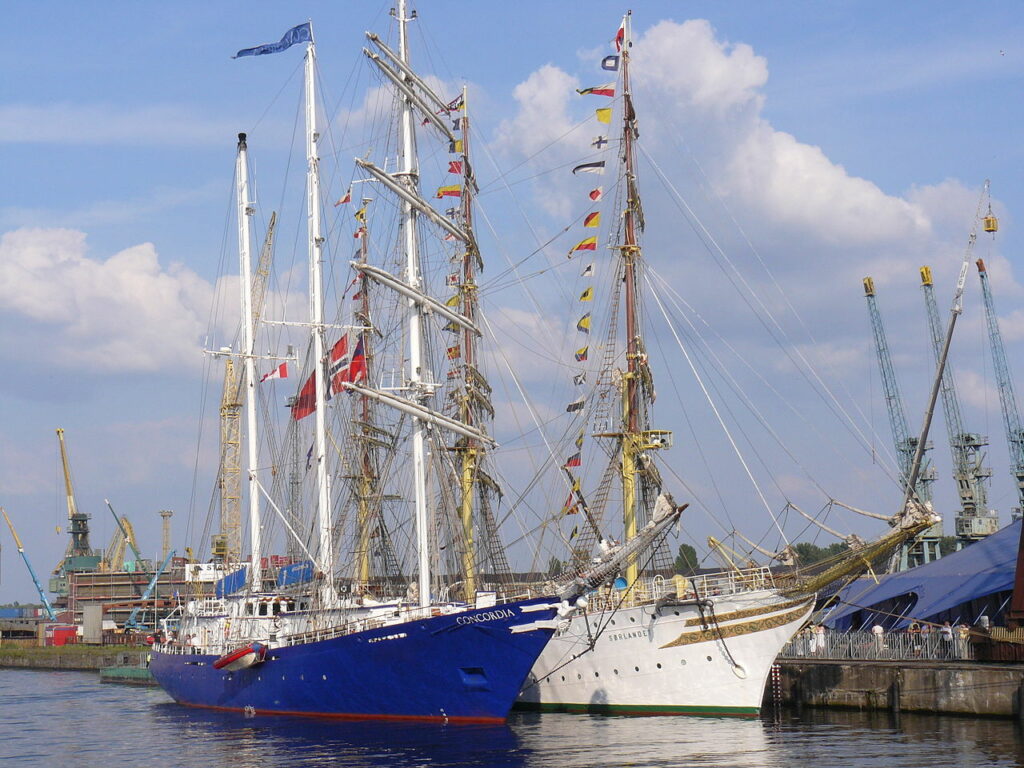
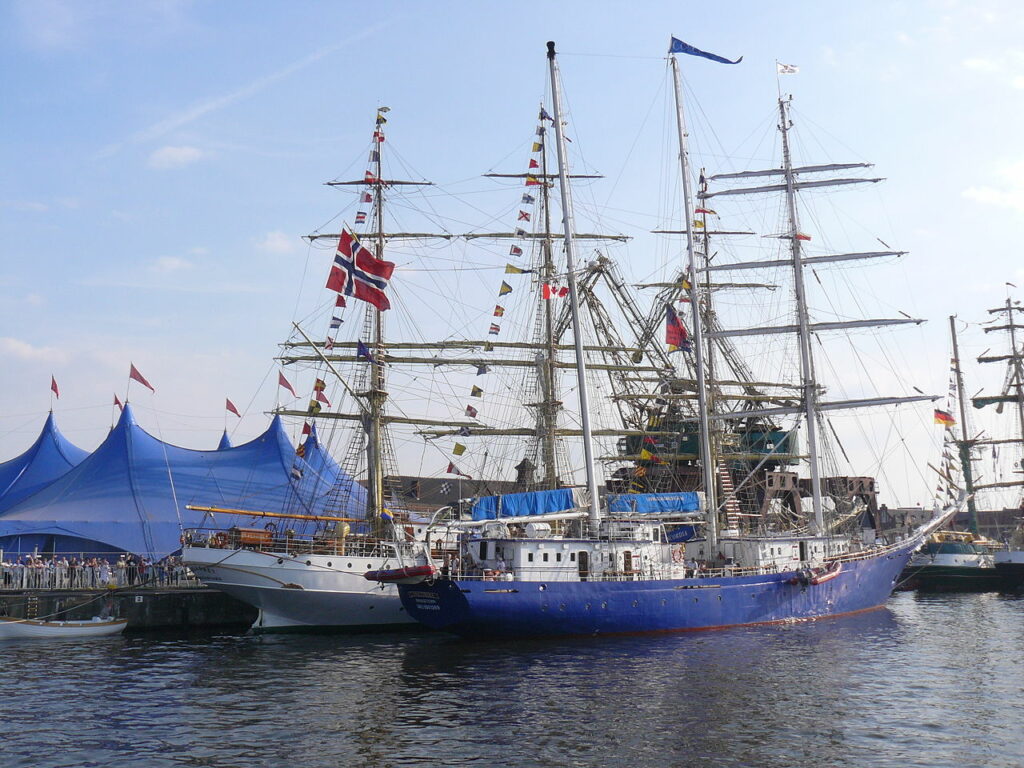
Facts and Trivia:
A barquentine-rigged ship is a sailing vessel with three or more masts, where the foremast is square-rigged, and the remaining masts are fore-and-aft rigged (meaning their sails run parallel to the ship’s length).
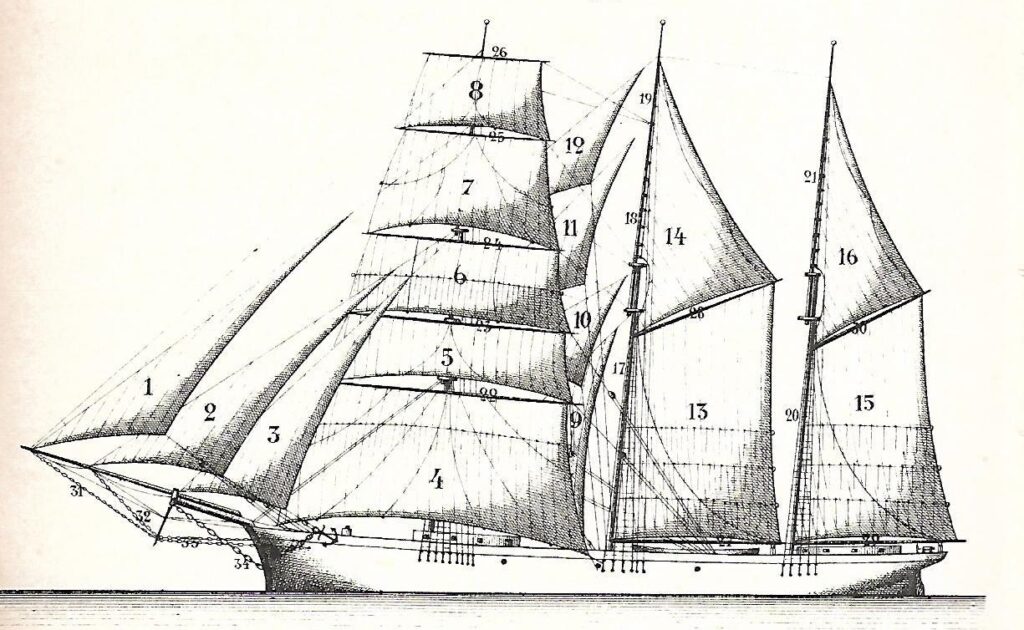
This rigging style combines the maneuverability and ease of handling of fore-and-aft sails with the power and efficiency of square sails, making barquentines popular for training ships and ocean voyages. Compared to full-rigged ships, barquentines require a smaller crew while still being capable of long-distance sailing.
SS (Steamship)
The prefix SS, standing for Steamship, is perhaps one of the most iconic in maritime history. It denotes a vessel powered by steam engines, usually with a propeller (screw steamer) as its main propulsion system. This technology revolutionized shipping in the 19th century. Steamships were the workhorses of global trade, carrying goods and passengers across vast oceans. While steamships are now largely obsolete, many historic ships retain the SS designation.
RMS Titanic, often referred to as an SS, was technically both a Royal Mail Ship and a steamship.
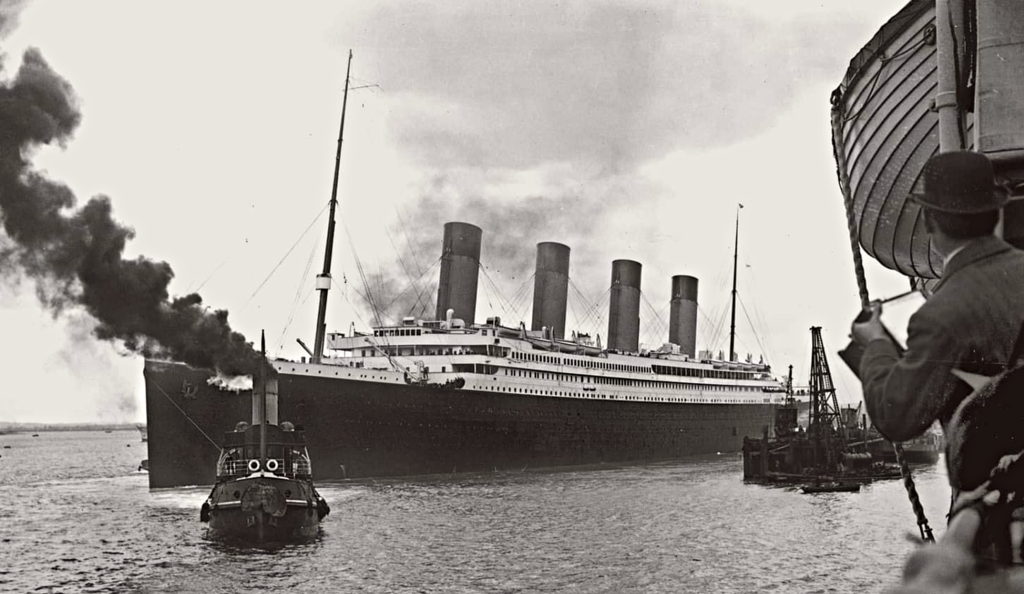
SS Great Britain was a groundbreaking iron-hulled steamship designed by Isambard Kingdom Brunel, English civil and mechanical engineer. When launched, the SS Great Britain was the largest ship in the world, designed to transport passengers between Britain and America. Her hull was constructed from wrought iron, making her the first ship to use a propeller for propulsion. The innovative design featured a balanced rudder, watertight bulkheads, and a double bottom, setting new standards in shipbuilding. Her influence extended to both naval and merchant vessel construction, shaping the future of maritime engineering.
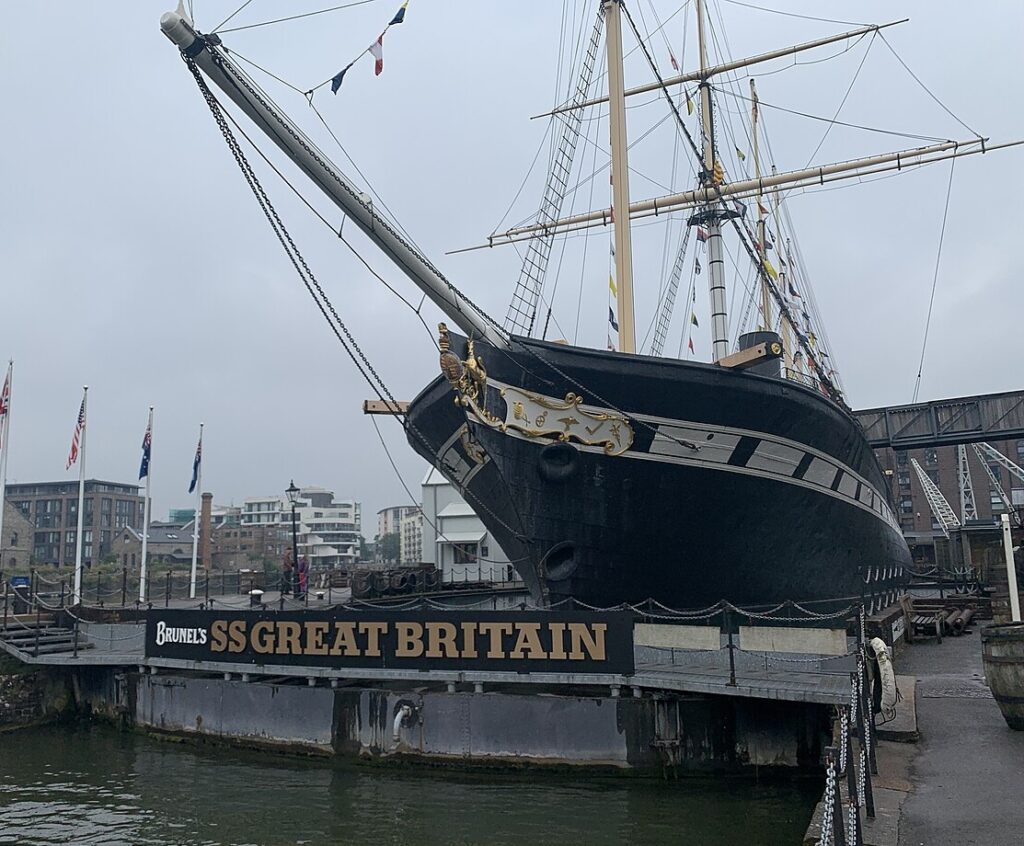
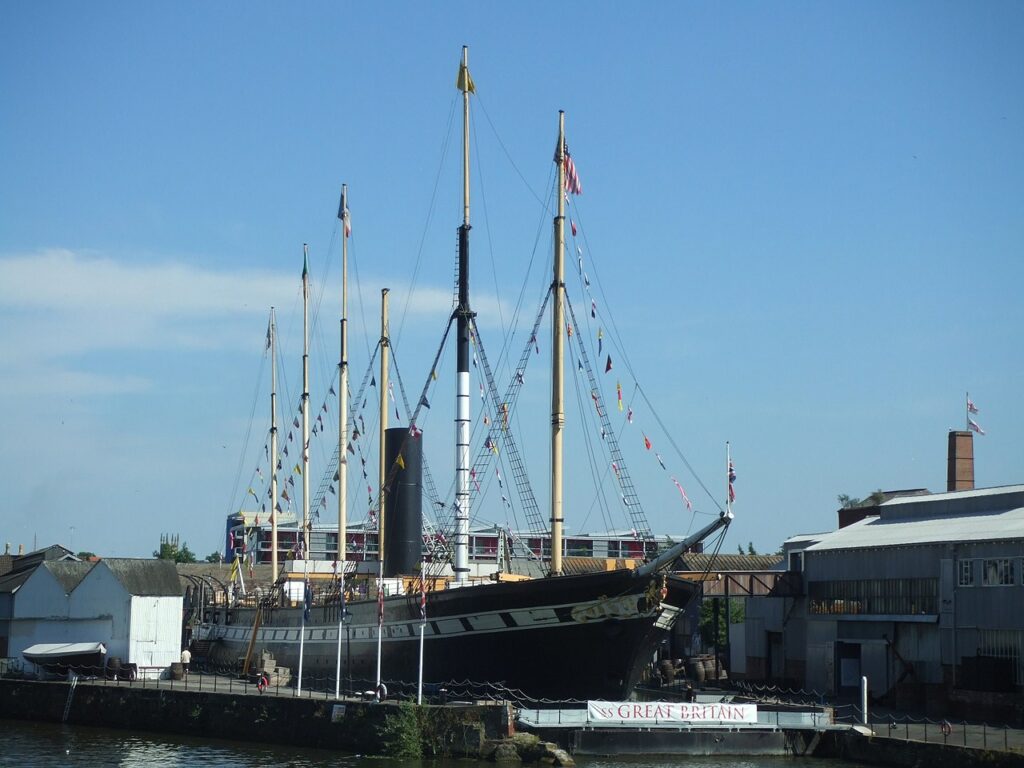
Facts and Trivia:
Steamships were so transformative that they rendered many traditional sailing ships obsolete within decades.
MV (Motor Vessel)
As internal combustion engines replaced steam power, the prefix MV emerged. This abbreviation signifies a motorized vessel, usually powered by diesel engines. MV is widely used, reflecting the dominance of motor propulsion in commercial shipping. Today, most modern cargo ships and tankers carry this prefix.
MV Doulos Phos holds the record as the world’s oldest active ocean-going passenger ship before her retirement. Originally launched in 1914, she served in various roles, including a cargo vessel, troop transport, and cruise ship, before becoming a floating bookstore in 1977. Traveling to over 100 countries, she brought literature and educational resources to millions of people. Her name, meaning “Servant Light”, reflects her mission to spread knowledge. After being decommissioned in 2010, she was converted into a luxury hotel in Singapore, preserving her historic legacy.
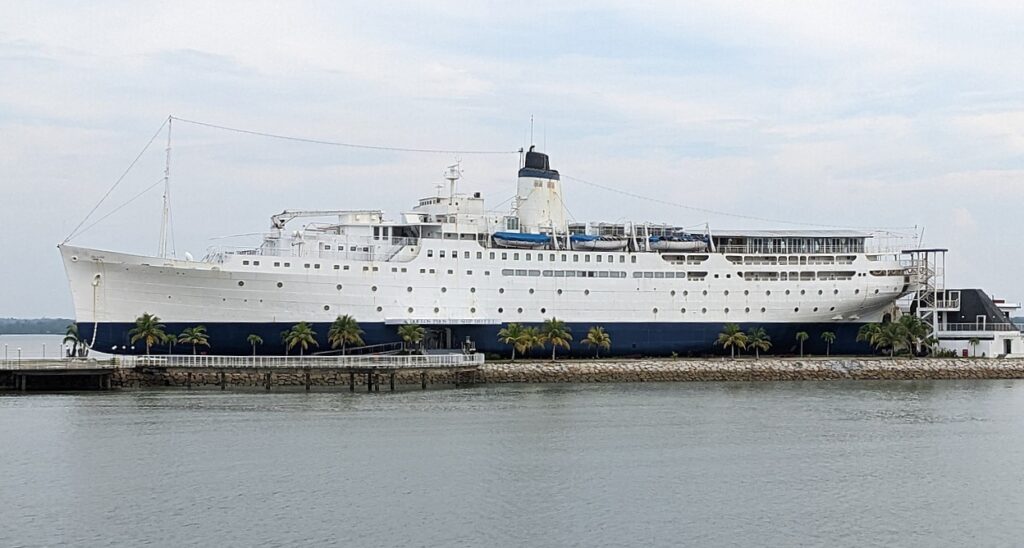
MV Ever Given, one of the largest container ships in the world, became infamous in 2021 when she blocked the Suez Canal for six days. Measuring 400 meters (1,312 feet) long, this massive vessel ran aground due to strong winds and poor visibility, completely halting global trade through one of the world’s busiest waterways. The blockage disrupted supply chains worldwide, delaying billions of dollars in goods. Tugboats and dredgers worked tirelessly to free the ship, and after nearly a week, she finally refloated. The incident highlighted the fragility of global shipping logistics and the immense scale of modern container vessels.
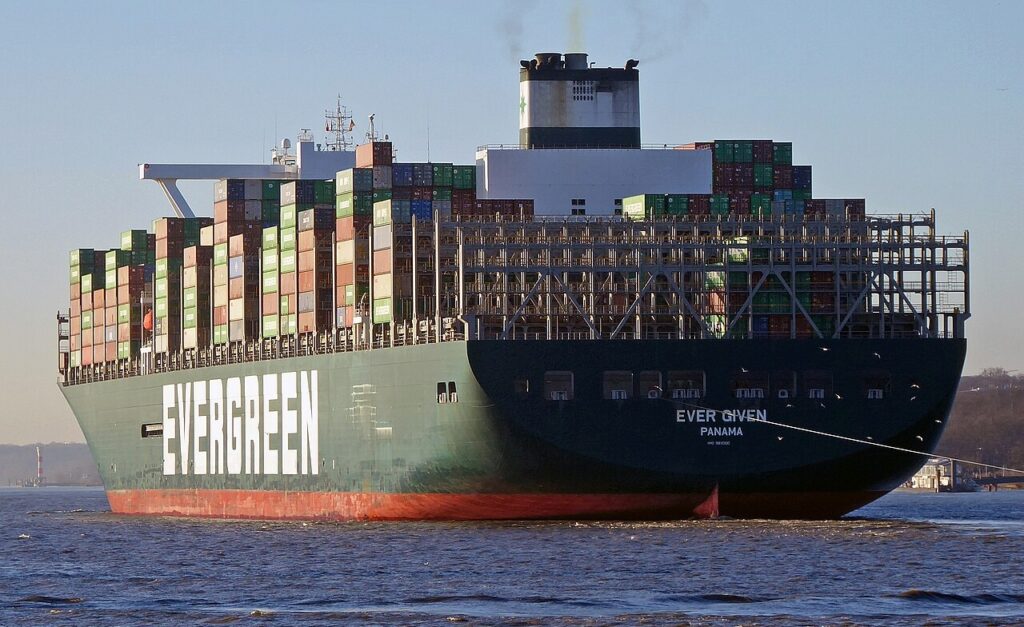
MV Emma Maersk is one of the most iconic container ships in modern maritime history. Emma Maersk was named after Emma Mærsk Mc-Kinney Møller, the late wife of Mærsk Mc-Kinney Møller, who was the longtime head of A.P. Moller-Maersk, the Danish shipping giant. The ship was launched in 2006 and became the first of the E-Class container vessels, setting new records in size and capacity at the time.
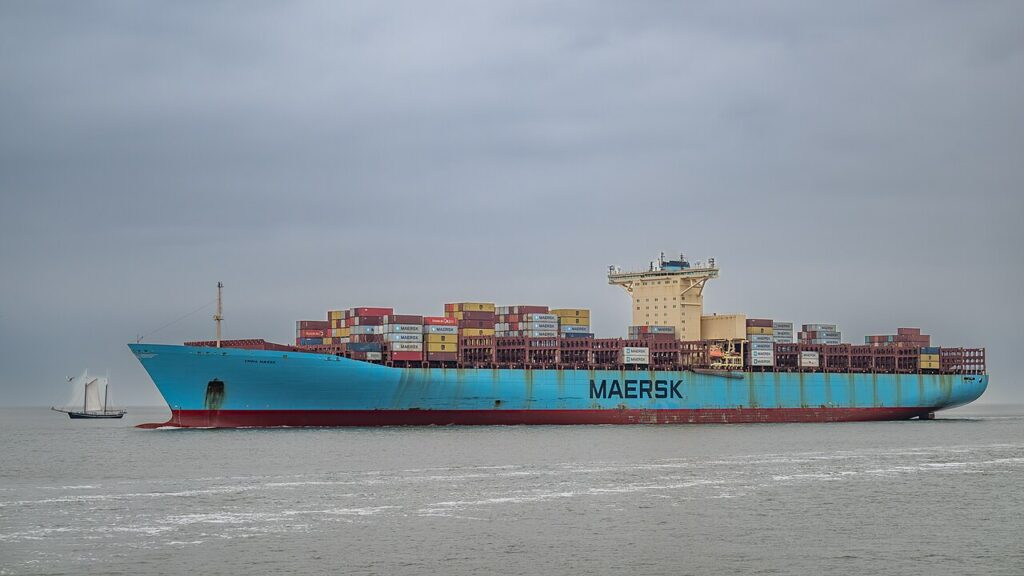
She was the first of Maersk’s E-Class vessels, a fleet of eight sister ships—all named with the letter ‘E’—that were among the largest and longest container ships of their time. Her sister ships—Estelle Maersk, Ebba Maersk, Evelyn Maersk, Elly Maersk, Eleonora Maersk, Eugen Maersk, and Edith Maersk—were built between 2006 and 2008, each designed to handle massive cargo loads with a capacity of over 14,000 TEUs (twenty-foot equivalent units).
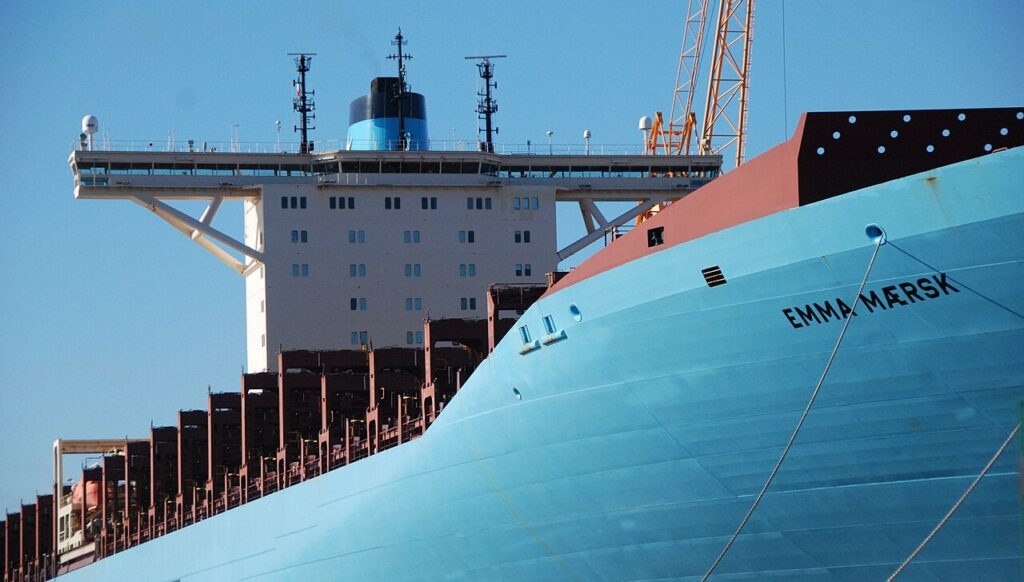
To put this into perspective, one TEU represents the size of a standard 20-foot shipping container, commonly used for transporting goods worldwide. With a capacity of 14,000 TEUs, Emma Maersk can carry the equivalent of 14,000 standard containers, which, when stacked, would stretch for miles. This enormous capacity allows for the efficient transport of consumer goods, electronics, raw materials, and manufactured products across global trade routes.
Facts and Trivia:
RV Calypso, an iconic Research Vessel (RV), served as Jacques-Yves Cousteau’s floating laboratory, exploring the world’s oceans for decades. Originally built as a British minesweeper during World War II, she was converted into a research ship in 1950 and outfitted with cutting-edge technology, including underwater cameras, a diving saucer, and even a helicopter pad. As one of the most famous research vessels in history, Calypso played a crucial role in advancing oceanography and marine conservation, bringing the wonders of the deep sea to audiences worldwide through Captain Cousteau’s pioneering documentaries.
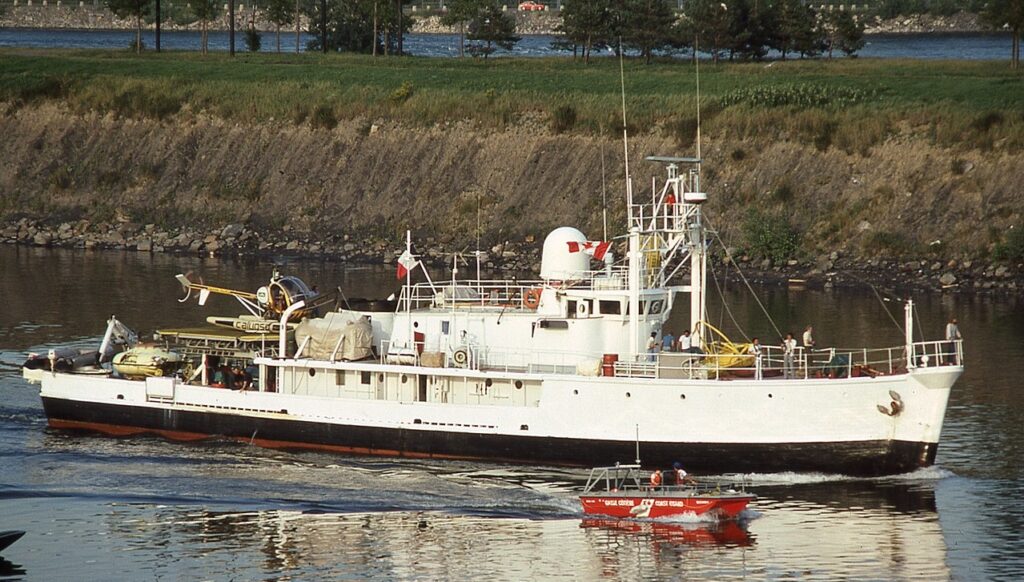
MT (Motor Tanker)
For vessels specializing in the transport of liquid cargo, such as crude oil or chemicals, the prefix MT or T/T (Turbine Tanker) is commonly used. These tankers are engineered for safety and efficiency, often featuring double hulls to prevent spills. MT ships play a critical role in the global energy supply chain because they are specifically designed to transport liquid cargo, including refined petroleum products and liquefied natural gas (LNG). These vessels are equipped with specialized tanks that ensure the safe and efficient transport of such volatile and valuable commodities. With the global demand for energy continuously rising, MT ships are responsible for moving large volumes of energy resources across vast distances.
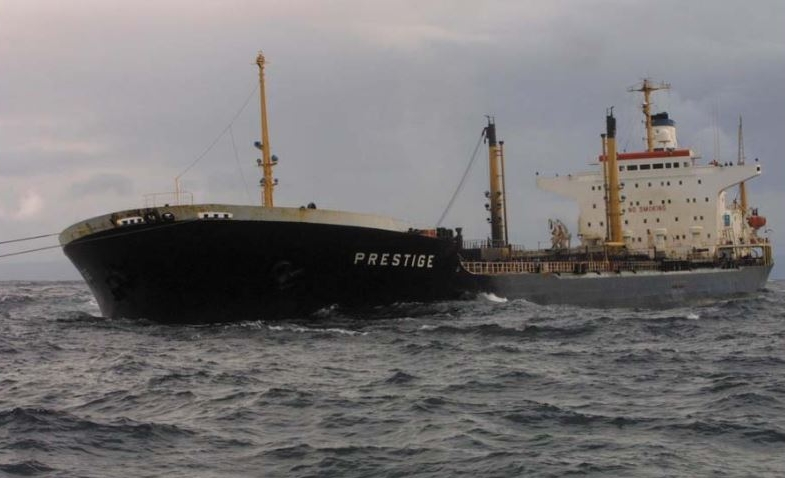
MT Prestige is infamous for her role in one of the most significant environmental disasters in maritime history. In 2002, the tanker sank off the Spanish coast, spilling millions of gallons of oil into the Atlantic Ocean, causing widespread damage to marine life and coastal ecosystems. The disaster highlighted the risks involved in oil transport and led to significant changes in maritime safety regulations. Despite her tragic end, the incident underscored the critical importance of vessel maintenance, route planning, and environmental safeguards to prevent such catastrophes in the future. The MT Prestige’s sinking remains a stark reminder of the vulnerabilities within the global energy supply chain.
RMS (Royal Mail Ship)
One of the most prestigious designations, RMS stands for Royal Mail Ship and is granted to ships contracted to carry mail for the British Royal Mail. Though rare today, the prefix still appears on some ships as an honorary title.
RMS Queen Mary 2 is a luxury ocean liner operated by Cunard Line, a British-American cruise line, and is notable for being one of the few modern ships to retain the RMS designation.
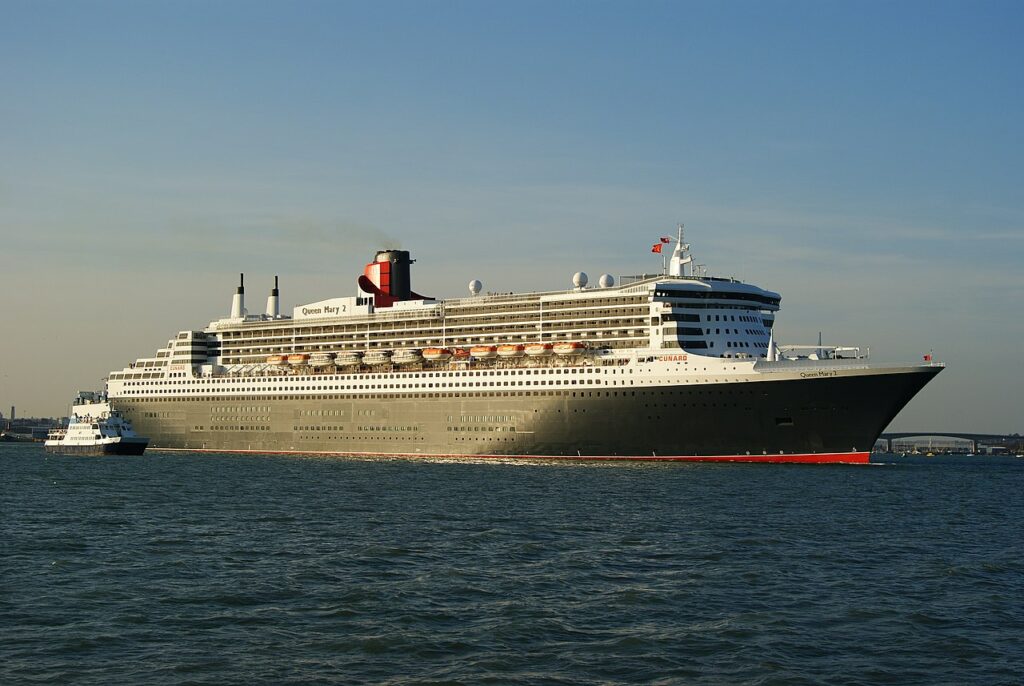
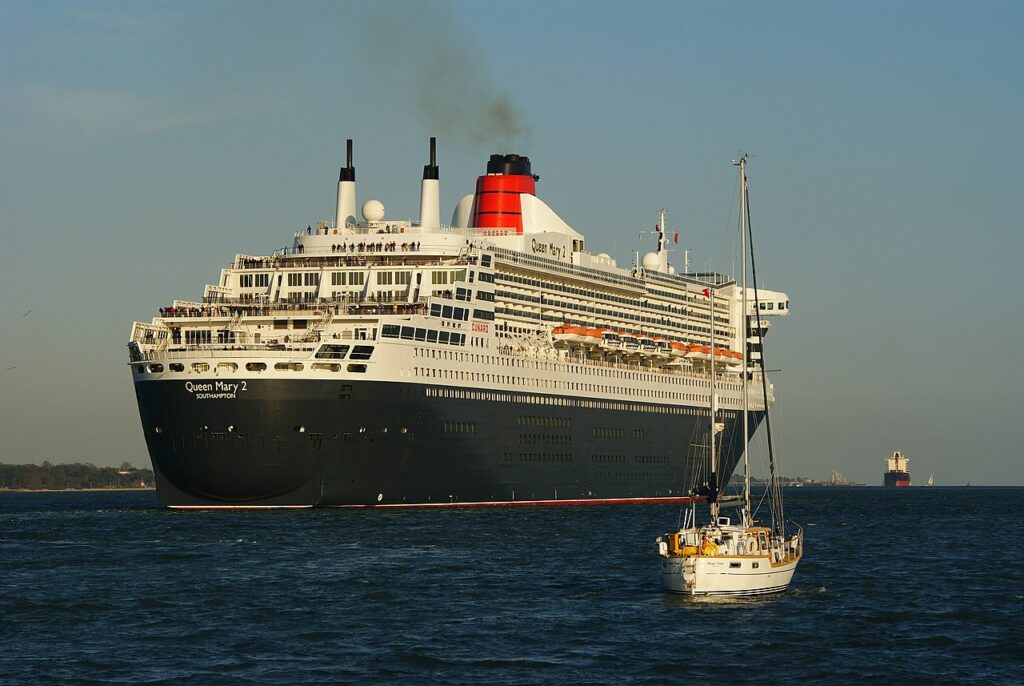
Launched in 2003, she was designed as both a cruise ship and a transatlantic liner, capable of withstanding the rough conditions of the North Atlantic. Queen Mary 2 blends classic maritime elegance with modern amenities, offering passengers a unique experience reminiscent of the golden age of ocean travel while maintaining her role as a functional and prestigious vessel in the Cunard fleet.
Facts and Trivia:
Amerigo Vespucci is an Italian training ship, proudly bearing the prefix “Nave” (NV), which means “ship” in Italian. Named after the explorer Amerigo Vespucci, whose name inspired the name of the Americas, this vessel represents Italy’s rich maritime heritage. Launched in 1931, she features a striking 19th-century design with towering masts and intricate rigging, making it one of the most beautiful tall ships still in service. In 2024, the Amerigo Vespucci made a notable visit to Los Angeles, where she attracted crowds eager to see this historic sailing ship up close.
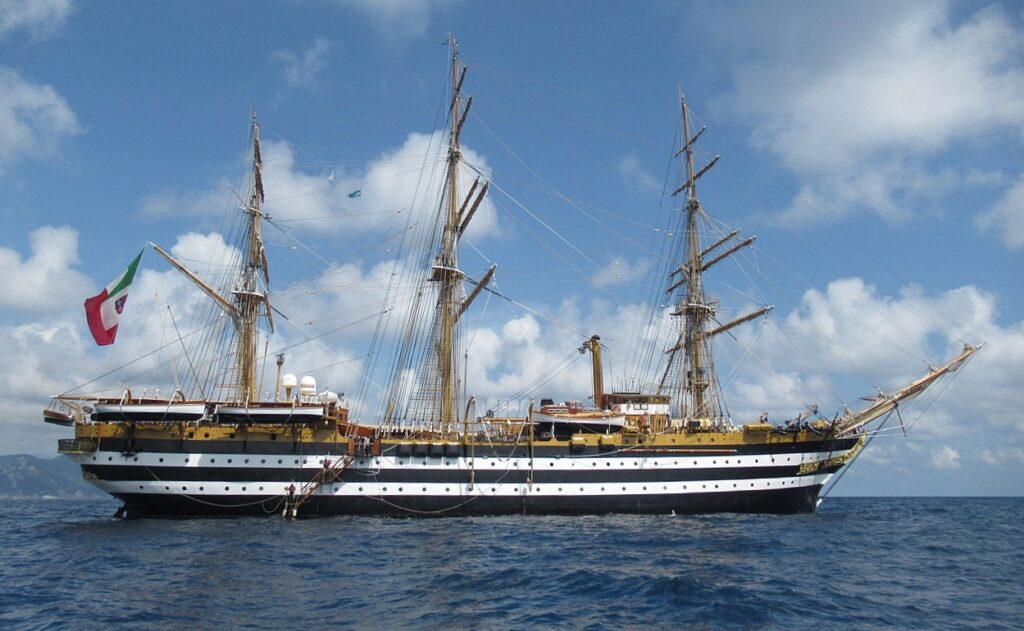
Naval Ship Prefixes: A Look into Military Maritime
Military ships have specific prefixes indicating their affiliation with a nation’s navy. Naval prefixes often highlight their allegiance or role.
HMS (His/Her Majesty’s Ship)
The British Royal Navy uses HMS to identify its commissioned ships. This prefix underscores the ship’s service to the monarchy and its role in the defense of the nation.
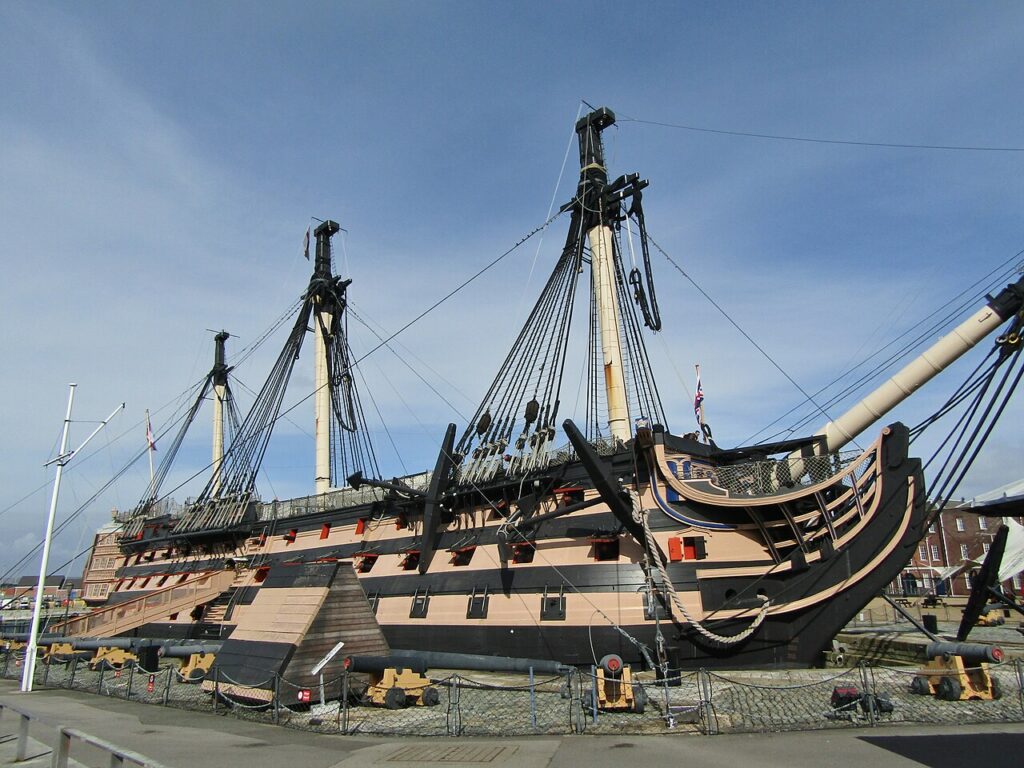
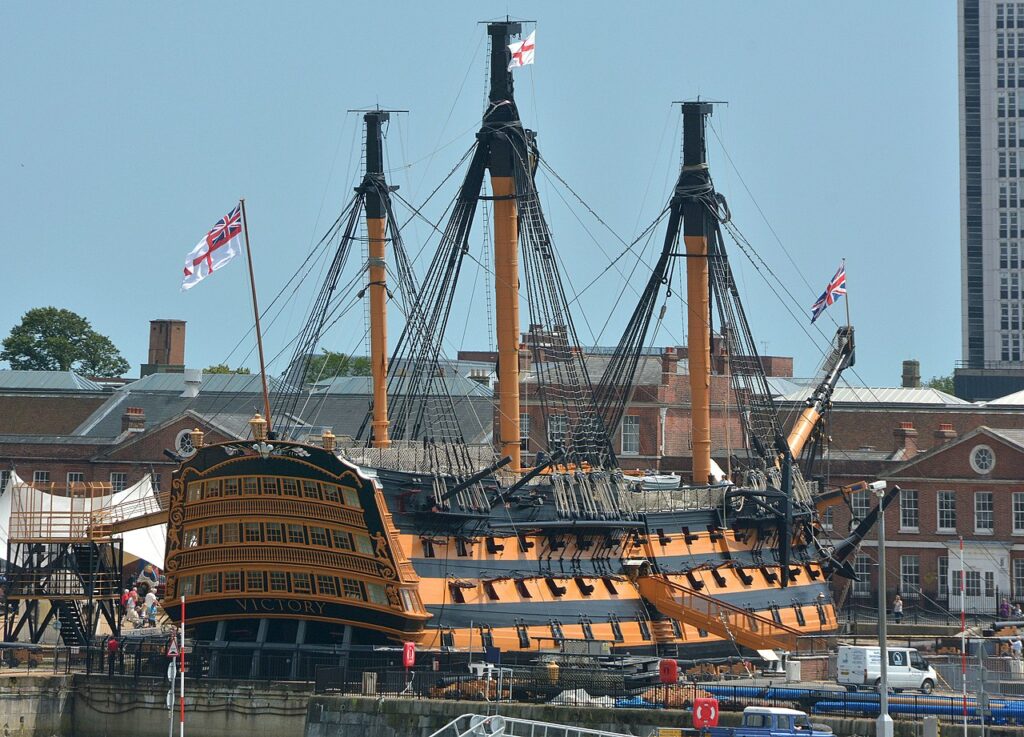
HMS Victory is one of the most famous warships in British naval history, best known as Lord Nelson’s flagship during the Battle of Trafalgar in 1805. Launched in 1765, this first-rate ship of the line played a key role in several major conflicts and remains a symbol of Britain’s naval dominance during the Age of Sail. Today, she is preserved as a museum ship in Portsmouth, serving as a lasting tribute to Nelson’s leadership and the Royal Navy’s heritage.
HMS Dreadnought was a groundbreaking battleship, launched in 1906, that revolutionized naval warfare with “all-big-gun” armament, the concept of a battleship design that features a uniform main battery of large-caliber guns and steam turbine propulsion. Her design rendered earlier battleships obsolete and set the standard for a new era of naval power, leading to the term “dreadnought” being used to describe an entire generation of warships. The rapid advancement she inspired triggered a global naval arms race, particularly between Britain and Germany, ahead of World War I.
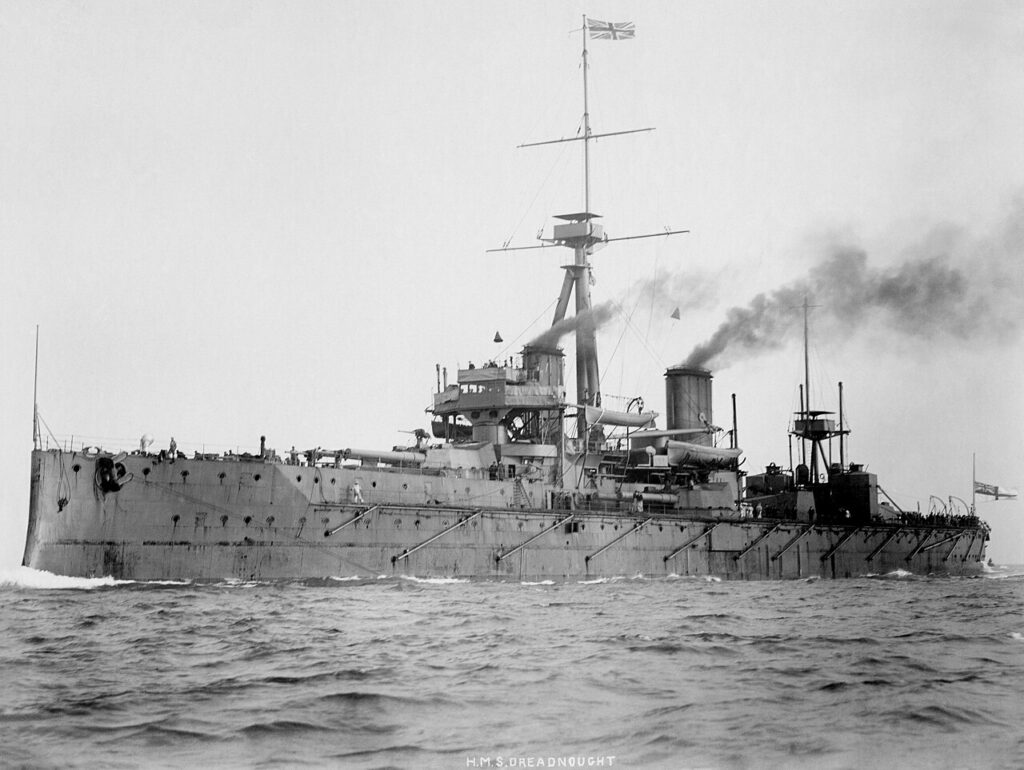
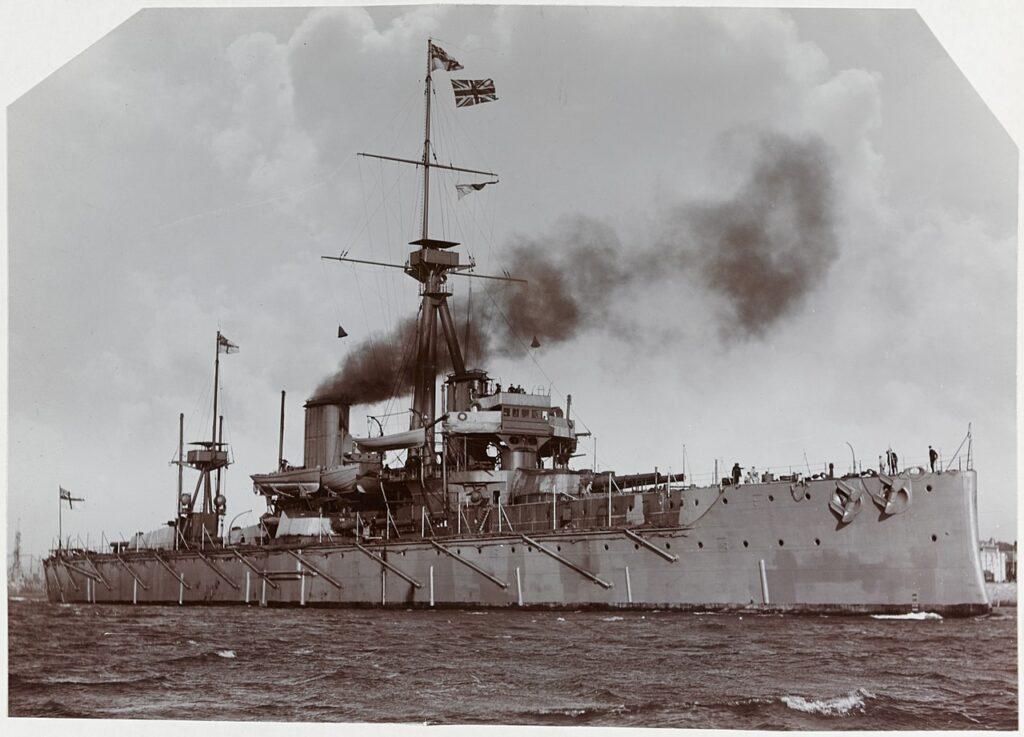
USS (United States Ship)
The USS prefix identifies ships in the United States Navy. This prefix signifies government ownership and naval operation. It was officially adopted in 1907, though the tradition dates back further.
USS Texas is a historic battleship that served in both World War I and World War II, making her one of the few surviving dreadnought-era warships. Commissioned in 1914, she was among the first U.S. battleships to mount anti-aircraft guns and use modern fire control systems. During World War II, she played a key role in D-Day, when Allied forces launched the largest amphibious invasion in history, landing on the beaches of Normandy, France. This operation marked a turning point in the war, leading to the liberation of Western Europe from Nazi control. Today, she is preserved as a museum ship, offering visitors a glimpse into early 20th-century naval warfare.
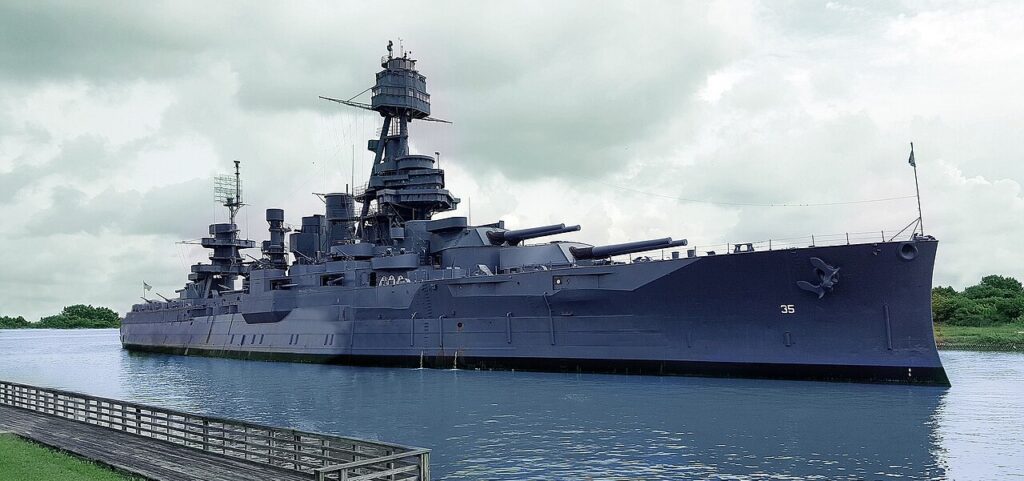
USS Enterprise is one of the most storied names in U.S. naval history, carried by multiple warships, including the first nuclear-powered aircraft carrier, CVN-65. Commissioned in 1961, she was the longest naval vessel ever built at the time and played a key role in missions ranging from the Cuban Missile Crisis to Operation Enduring Freedom. Several other USS Enterprise ships have served with distinction, including aircraft carriers and World War II’s famous CV-6, known for her pivotal role in the Pacific Theater.
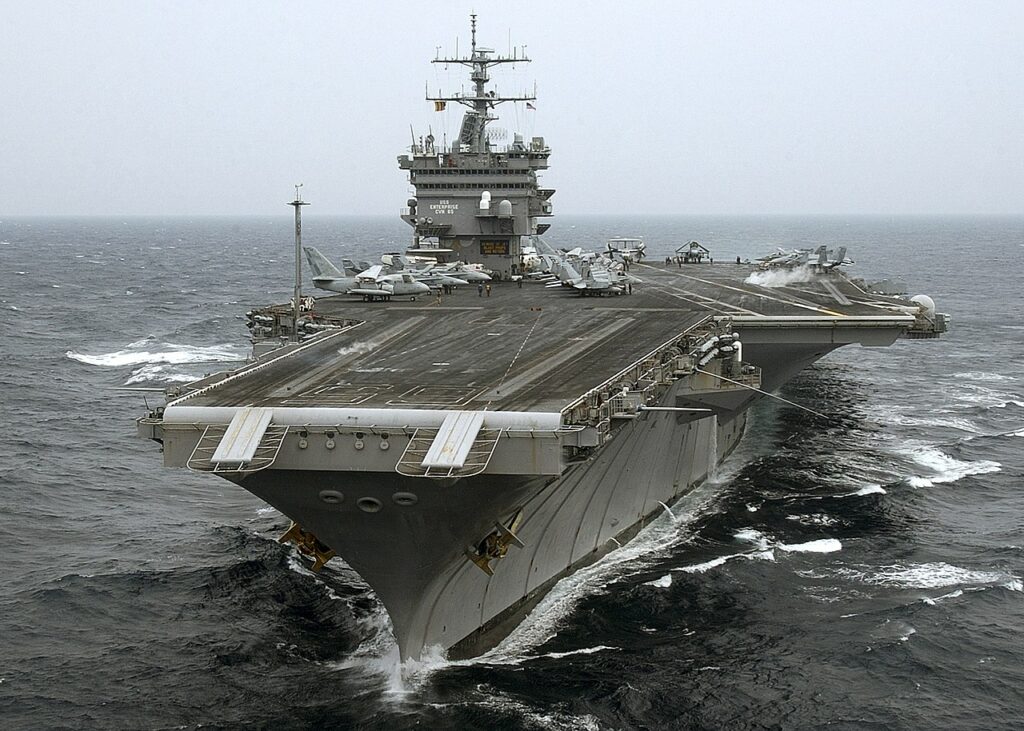
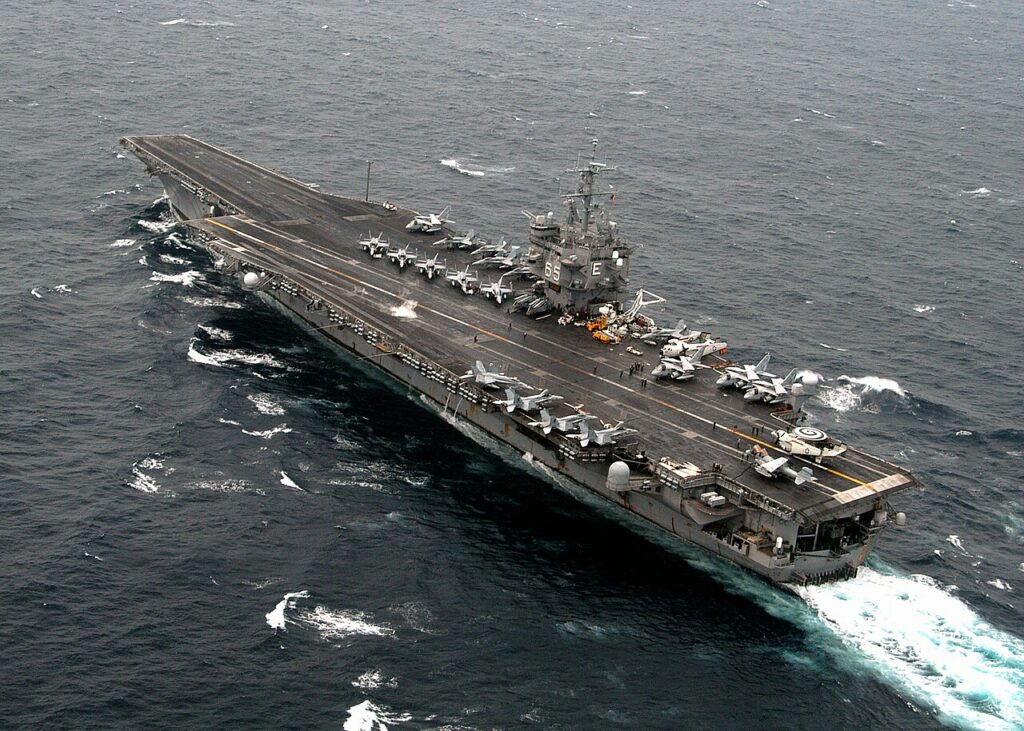
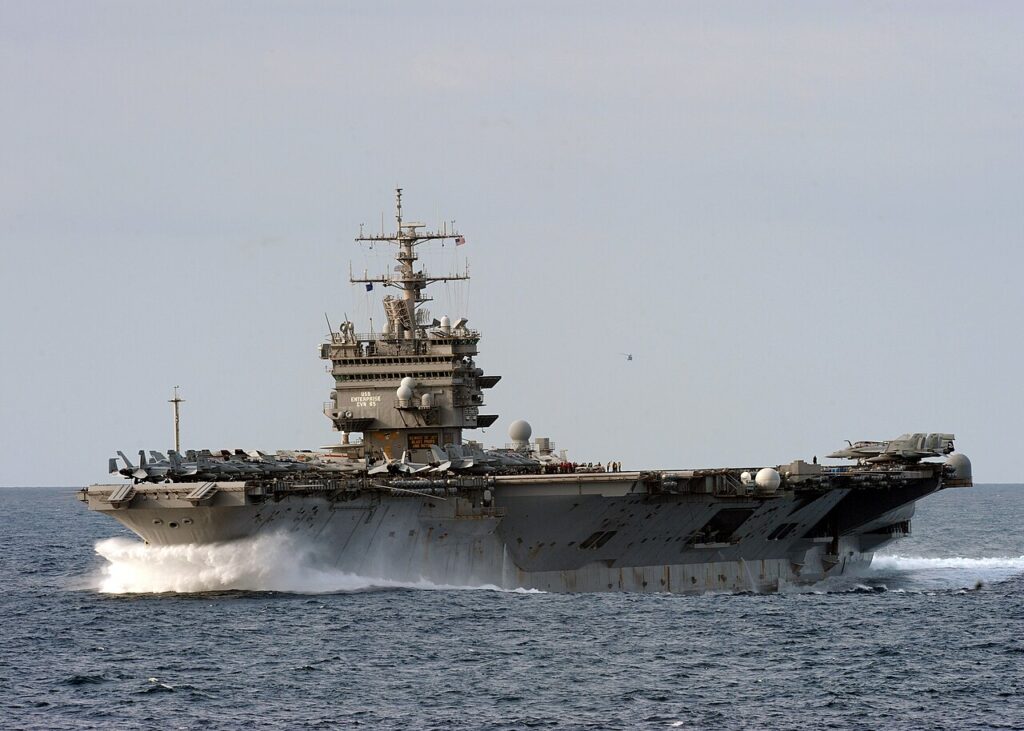
KMS (Kriegsmarine Ship)
During World War II, Germany’s Kriegsmarine used the prefix KMS for its warships.
KMS Bismarck – One of the most feared battleships of WWII.
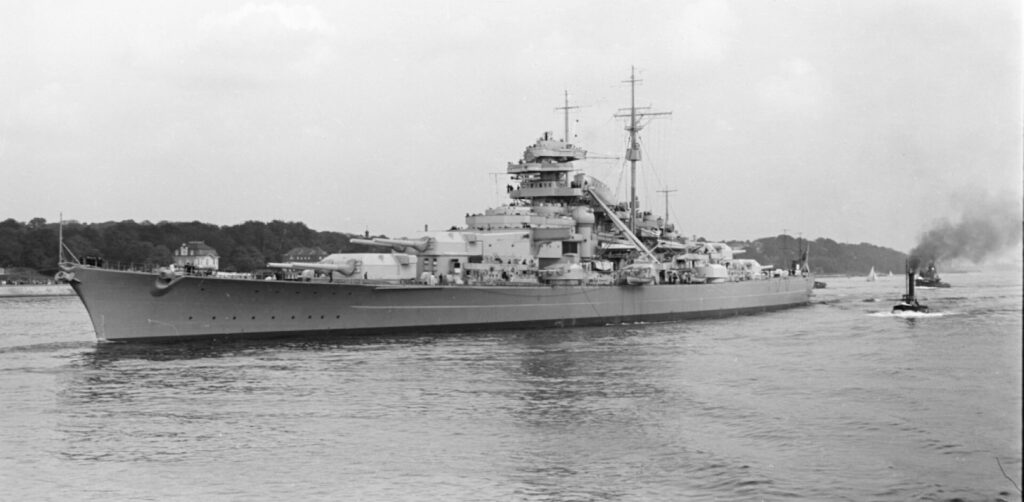
Facts and Trivia:
Submarines Have Their Own Prefixes. For instance, British submarines use HMS, but the U.S. submarines also carry the USS designation, just like surface ships.
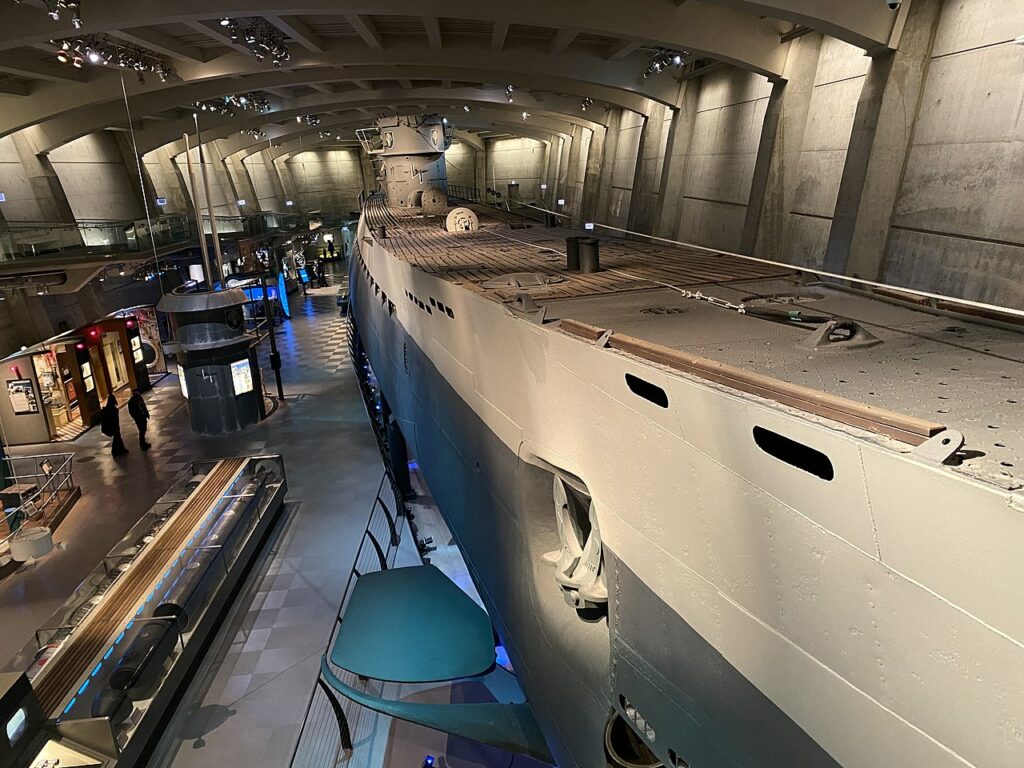
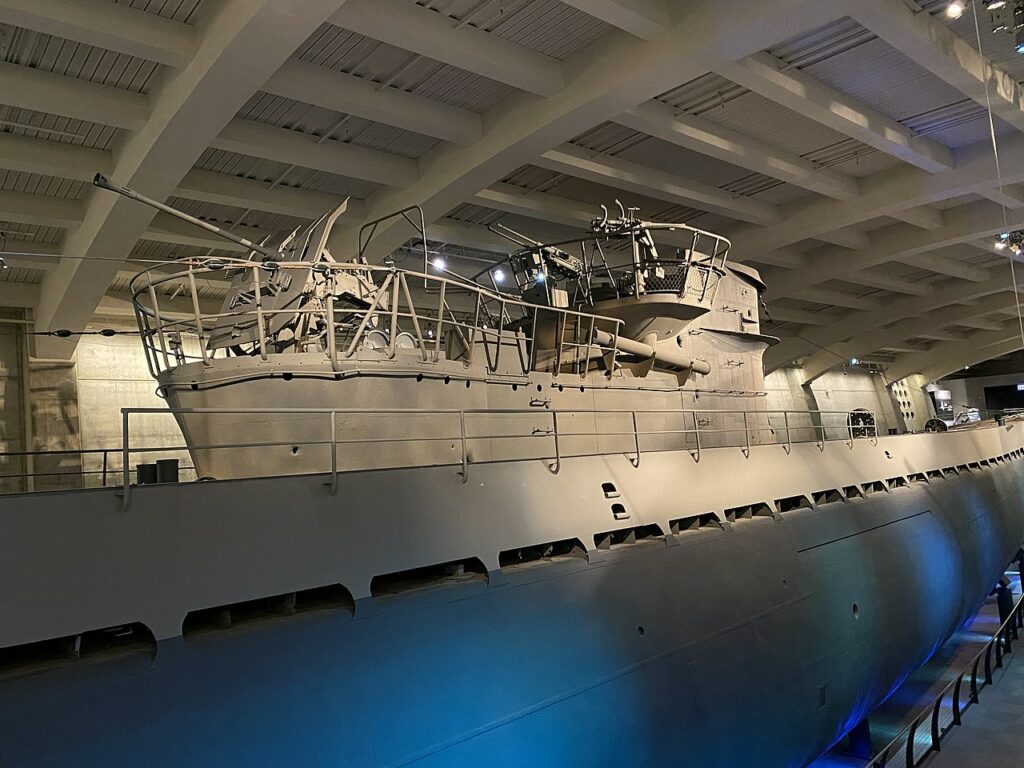
U-505 is a German U-boat (Unterseeboot) from World War II, captured by the U.S. Navy in 1944—one of the few submarines ever seized intact. Now preserved at the Museum of Science and Industry in Chicago, this Type IXC U-boat offers visitors a rare glimpse into wartime submarine life. The Type IXC submarine was a class of German U-boats used during World War II, part of the larger Type IX class. These submarines were designed for long-range missions, primarily for attacking merchant ships in the Atlantic. As a designated war prize, U-505 stands as a testament to naval warfare and codebreaking efforts that helped turn the tide of the war.
Specialized Ship Prefixes
FPSO (Floating Production Storage and Offloading)
This mouthful of a prefix describes vessels used in offshore oil and gas production. An FPSO serves as a mobile processing plant, extracting and storing oil from underwater fields. FPSOs represent the cutting edge of offshore engineering.
The Terra Nova FPSO is a floating production storage and offloading vessel operating in the North Atlantic, off the coast of Newfoundland, Canada. Launched in 2000, she was one of the first FPSOs to be used in North America and is designed to withstand the harsh conditions of the region. The vessel is crucial to the development of the Terra Nova oil field, allowing for efficient offshore oil extraction, processing, and storage before transportation. Her ability to operate in extreme weather and icy waters showcases the advancements in offshore oil production technology.
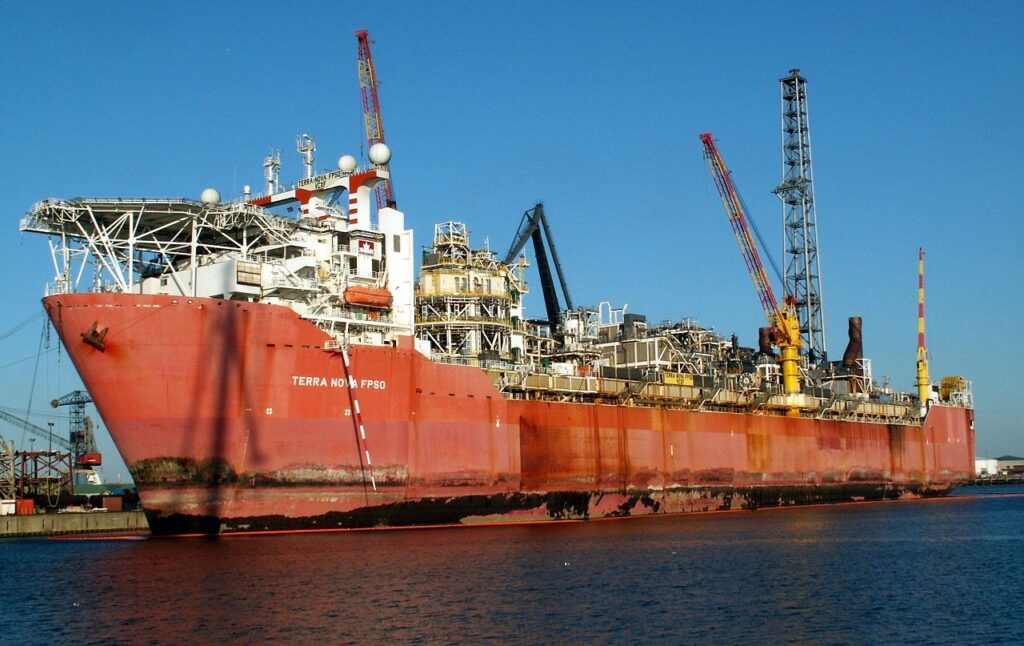
The Skarv FPSO is a state-of-the-art floating production vessel operating in the Norwegian Sea. Commissioned in 2010 and operated by Aker BP, she is designed for deep-water oil and gas production in harsh environments. The vessel features advanced processing systems, gas export capabilities, and a dynamic positioning system that enables her to remain stable without mooring. Skarv FPSO plays a critical role in Norway’s offshore energy sector, contributing significantly to the country’s oil and gas output.

Prefixes, like FSO (Floating Storage and Offloading), are specific to niche industries, showcasing how maritime naming conventions evolve with technology.
Facts and Trivia:
EV Nautilus is designated as an Exploration Vessel (EV) because she is specifically equipped for deep-sea exploration and research. Unlike standard research vessels (RV), which focus on scientific studies, an EV is designed primarily for underwater exploration, mapping, and documentation of the ocean floor. Owned and operated by the Ocean Exploration Trust, founded by Dr. Robert Ballard, EV Nautilus is equipped with remotely operated vehicles (ROVs) and advanced sonar technology to explore the deep sea. her missions focus on discovering shipwrecks, hydrothermal vents, and marine life in some of the planet’s most uncharted waters.
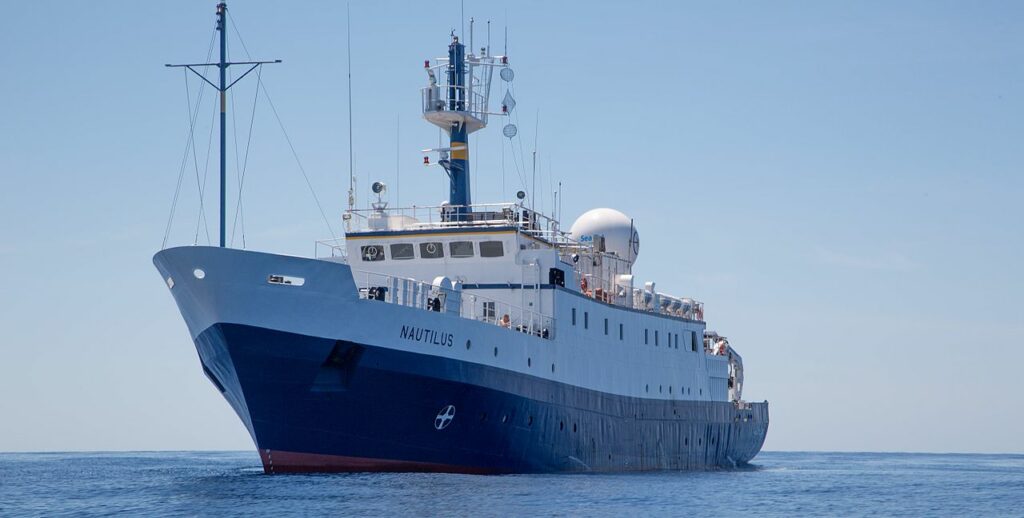
A Living Legend: The Steamship Alpena
Over time, some prefixes have faded from use while others have adapted to modern needs. For example, SS is now rarely assigned to new vessels, as steam power has been supplanted by more efficient technologies. But not all steamships are relics of the past. Some ships are still making waves today. One legendary example is the SS Alpena steamship, continues to sail the Great Lakes. Built in 1942 and originally named Leon Fraser, this remarkable vessel has stood the test of time, proving that steam-powered ships can still serve as reliable workhorses in modern shipping. In 2025, the SS Alpena celebrates her 83rd year.
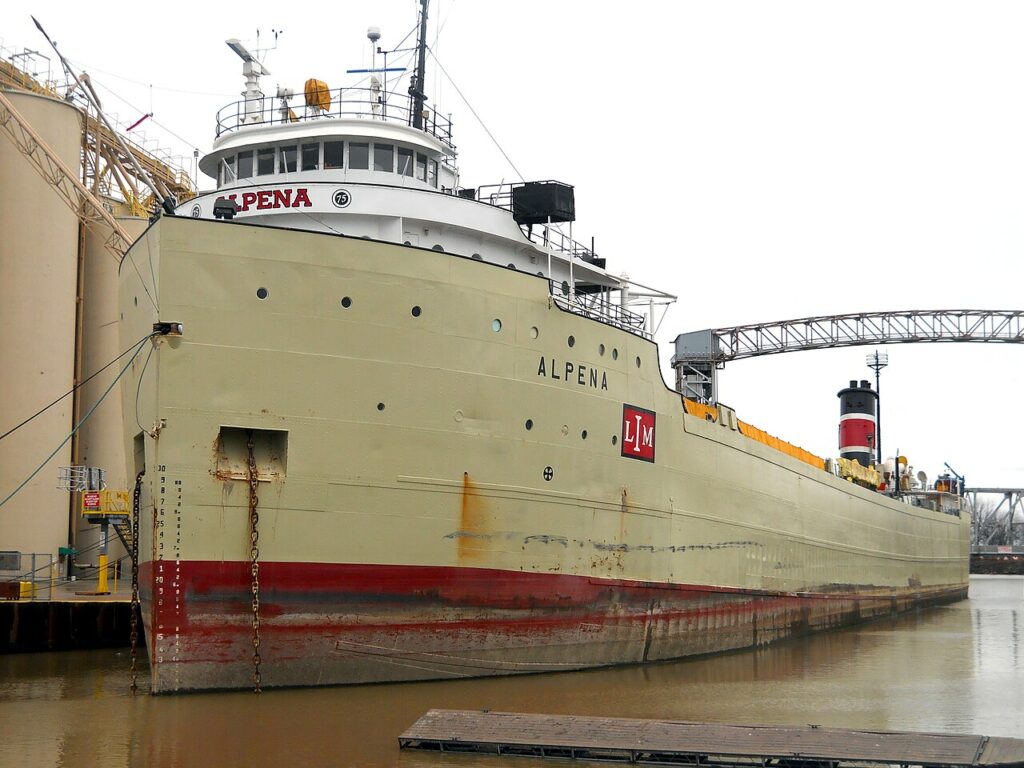
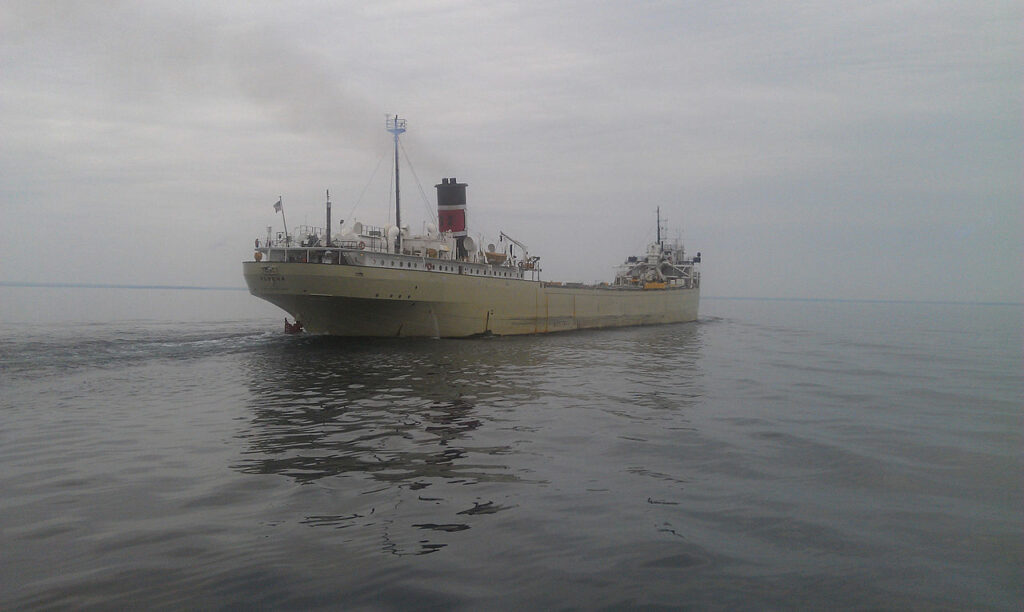
The SS Alpena serves as a cement carrier, transporting cargo across the Great Lakes. Despite its age, she remains a crucial part of the region’s shipping industry. Over the decades, she has weathered fierce storms, adapted to technological advancements, and earned a reputation as one of the last operating steamships in the area.
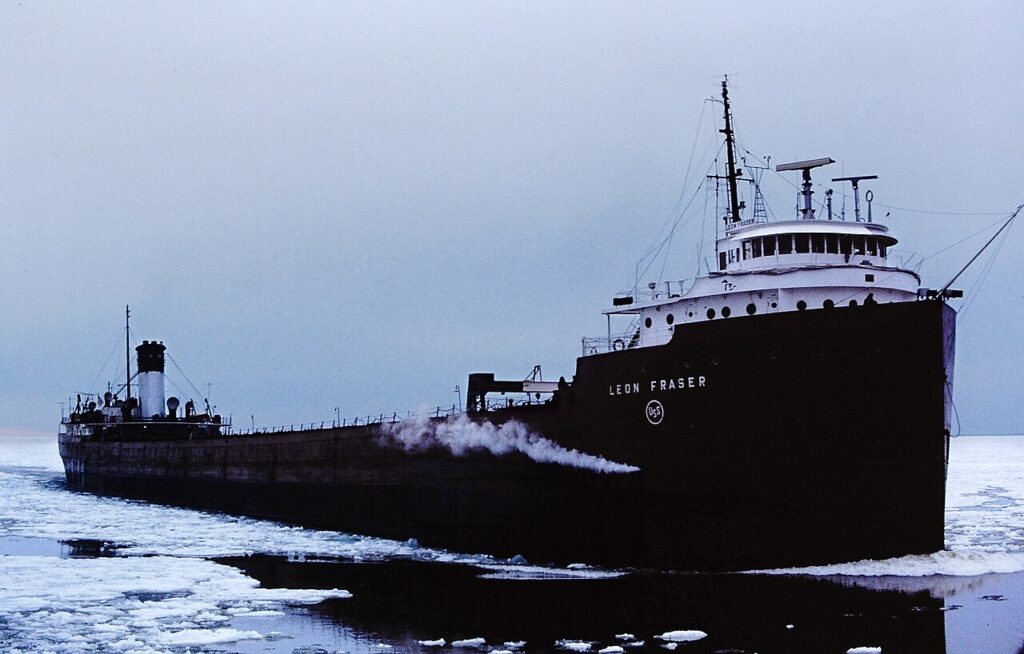
For maritime enthusiasts, the SS Alpena is more than just a ship. She is a floating piece of history. Her continued operation offers a glimpse into the past, reminding us of the golden era of steamships while proving that some legends refuse to fade away.
Facts and Trivia:
STS Kruzenshtern is a four-masted barque and one of the largest traditional sailing ships still in operation. The prefix ‘STS‘ stands for ‘Sail Training Ship,’ indicating the role in training cadets in maritime navigation and sailing techniques. Originally built in Germany in 1926 and named Padua after the Italian city, the vessel was transferred to the Soviet Union after World War II and renamed in honor of Russian explorer Adam Johann von Krusenstern (Admiral Ivan Fyodorovich Kruzenshtern).
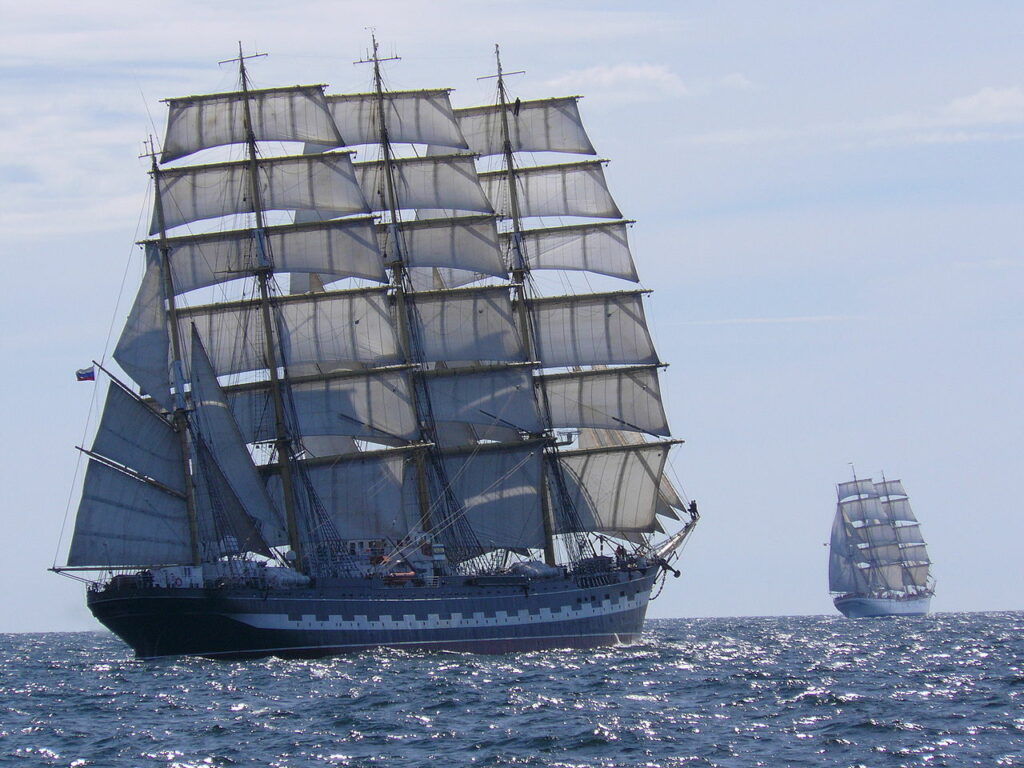
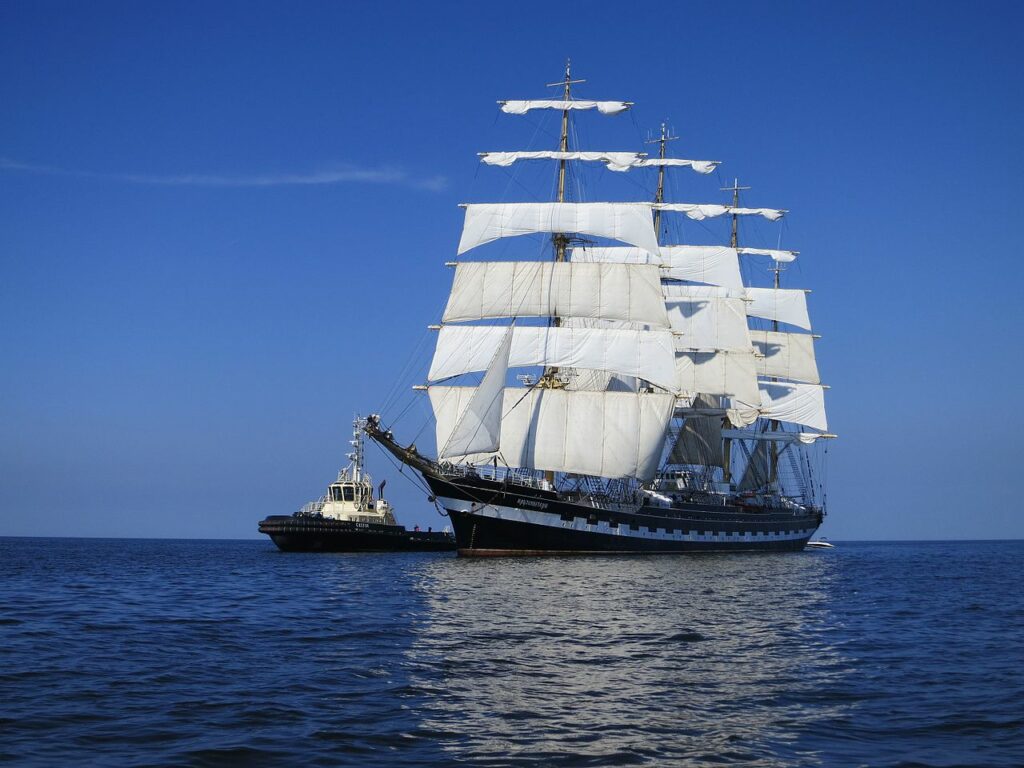
The TS (Training Ship) designation is used for vessels dedicated to maritime training, helping future sailors and officers prepare for life at sea. Training ships combine hands-on experience with classroom instruction, fostering seamanship skills.
The Resilience of SV
The resilience and beauty of sailing vessels (SV) have stood the test of time, as they continue to capture the imagination of people around the world. Once primarily a means of transportation, sailboats today symbolize freedom, adventure, and the romance of the sea. With growing awareness of environmental concerns, many have rediscovered sailing as an eco-friendly alternative, especially for short, scenic routes where wind power offers a sustainable solution. The charm of a sailboat, the gentle creak of the hull, the rush of wind filling the sails, and the serenity of the open water—makes it an experience that is both invigorating and peaceful. As more people join sailing clubs and take up the sport, sailing is enjoying a renaissance not only as a recreational activity but also as a way to reconnect with nature. Whether racing across the waves or simply enjoying a leisurely day on the water, sailboats remain a timeless symbol of adventure, sport, and a life lived close to the elements.
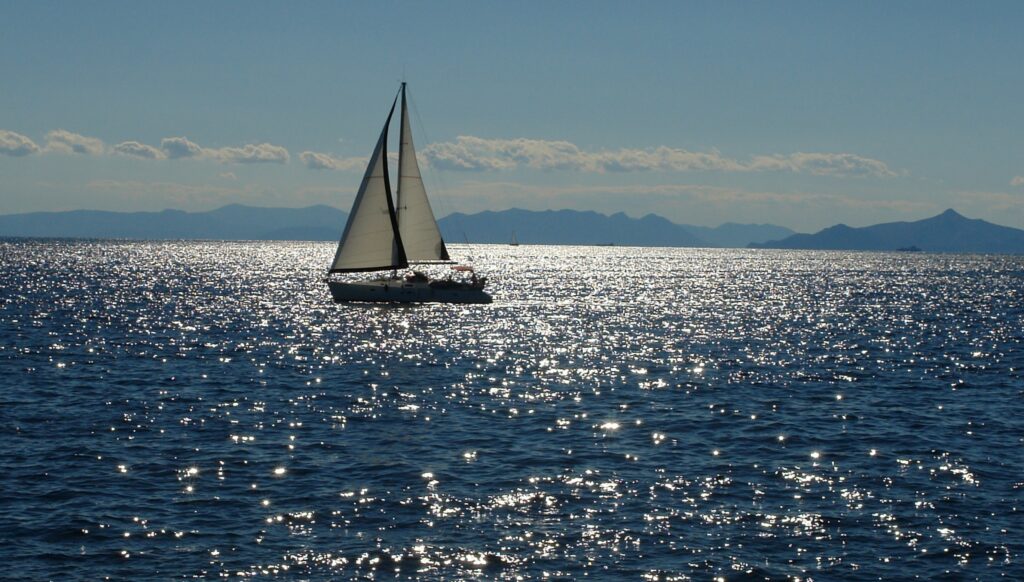
As we navigate the rich history and purpose behind ship prefixes, it’s clear that each vessel carries more than just its name—it embodies a story, a tradition, and a connection to the sea. From the majestic sailboats gliding through the waves to the powerful vessels of modern fleets, these prefixes continue to reflect the diverse roles ships play in our world. As more people embrace the timeless art of sailing, the legacy of these vessels grows stronger, reminding us of the enduring allure of the water. May you always find your own adventure on the open seas.
Happy Sailing!
